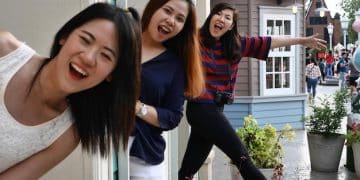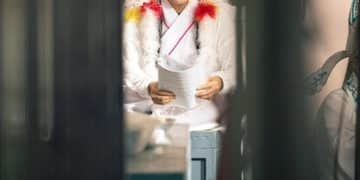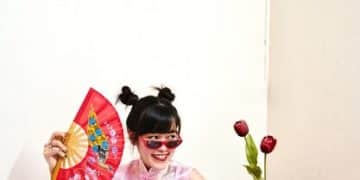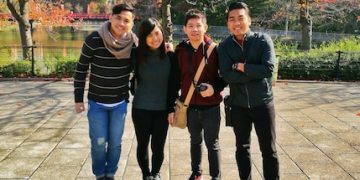Understanding Seollal: Celebrating Korean New Year in the US
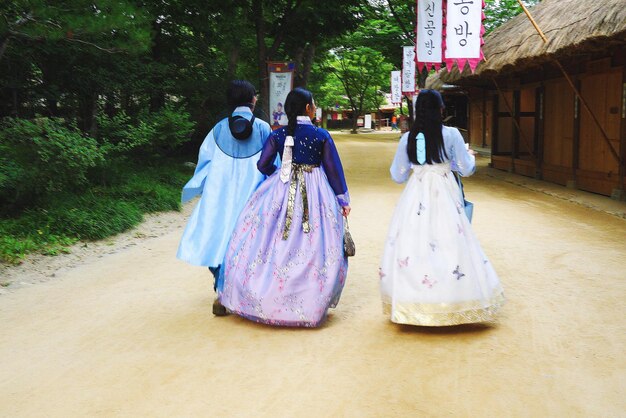
Seollal, the Korean Lunar New Year, holds significant cultural importance in the United States, serving as a vital link for Korean Americans to their heritage and traditions, fostering community bonds, and showcasing the beauty of Korean culture to a wider audience.
Understanding the Significance of Seollal (Korean New Year) Celebrations in the US reveals how this cherished holiday bridges generations and cultures. For Korean Americans, Seollal is more than just a holiday; it’s a profound connection to their roots, celebrated with traditions that have been passed down through generations.
What is Seollal? Exploring the Korean Lunar New Year
Seollal, also known as Korean Lunar New Year, marks one of the most significant holidays in the Korean calendar. This time of celebration is deeply rooted in tradition and provides a unique opportunity to honor ancestors and strengthen family bonds.
The holiday stretches for three days, allowing families ample time to travel, gather, and partake in time-honored rituals. For many Korean families, especially those living abroad, Seollal is a crucial reminder of their cultural heritage.
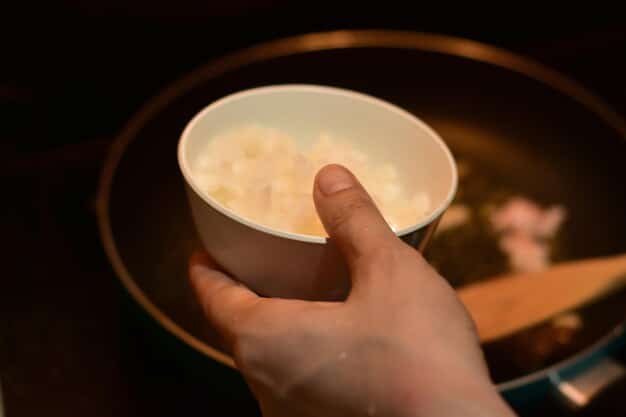
Historical Roots and Cultural Significance
The origins of Seollal can be traced back centuries, with various customs evolving over time. The celebration is not just a marker of the new year but also a tribute to ancestral spirits, as families perform rituals to show respect and seek blessings for the year ahead.
Culturally, Seollal emphasizes the importance of family unity, respect for elders, and remembrance of ancestors. It is a time when generations come together to share stories, traditions, and delicious food.
- Charye (차례): Ancestral memorial rites performed as a sign of respect.
- Sebae (세배): Formal bows to elders, accompanied by new year wishes.
- Tteokguk (떡국): Rice cake soup, symbolizing good fortune and aging one year.
This section explored the basic understanding of Seollal, discussing its background, the meaning of the holiday, and its traditional roots. We uncovered not only how Seollal began but its purpose and cultural relevance to those that celebrate it.
Celebrating Seollal in the US: A Growing Tradition
As the Korean diaspora continues to expand, Seollal celebrations are becoming more visible and vibrant in the United States. Korean American communities across the country organize events, festivals, and gatherings to commemorate this special occasion.
Celebrating Seollal in the US provides a unique opportunity for younger generations to connect with their heritage and share the traditions with friends and neighbors from different cultural backgrounds.
Community Events and Festivals
Many Korean American communities host Seollal festivals that feature traditional music, dance performances, food stalls, and cultural exhibitions. These events provide a taste of Korean culture and are open to everyone, regardless of their background.
Local Korean churches and community centers often organize Seollal celebrations that include traditional games, arts and crafts activities, and delicious Korean cuisine. These events offer a sense of community and belonging for Korean Americans.
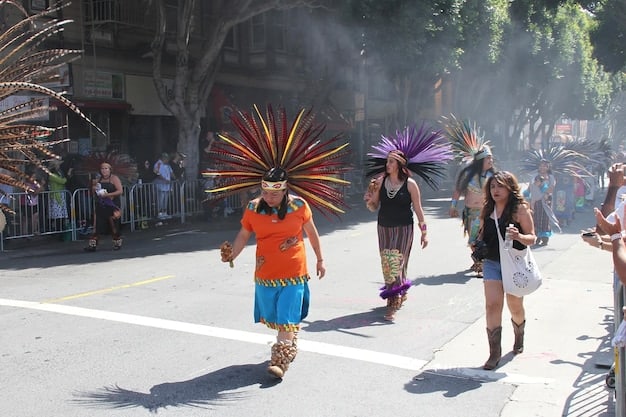
Adapting Traditions in a New Land
While many traditions remain unchanged, Korean Americans have also adapted Seollal celebrations to fit their lives in the US. This might involve incorporating American elements into the festivities or finding creative ways to observe traditions when family members are far apart.
Some Korean American families may celebrate Seollal alongside other American holidays, blending customs and creating new traditions that reflect their unique bicultural identity. These adaptations ensure that Seollal remains relevant and meaningful for future generations.
With this section, we acknowledge the growing popularity of Seollal in America and how the Korean diaspora have adjusted the traditional celebration to fit in with American culture. Korean Americans have done an amazing job in preserving their cultural legacy.
Traditional Seollal Customs: Preserving Cultural Heritage
Several customs and practices are associated with Seollal and passed down through generations. These customs are more than just rituals; they embody the values, beliefs, and cultural identity of the Korean people.
From ancestral rites to traditional games, each custom carries its own unique significance and contributes to the overall experience of Seollal. By preserving these customs, Korean Americans ensure that their cultural heritage remains alive and vibrant.
Sebae: Honoring Elders
Sebae is a traditional bowing ceremony performed during Seollal to show respect to elders. Younger family members bow deeply to their parents, grandparents, and other senior relatives, offering new year wishes and receiving blessings in return.
The Sebae custom symbolizes filial piety, respect for elders, and the importance of family hierarchy. It is a way of expressing gratitude for the wisdom and guidance provided by older generations.
- Ensure proper posture and respectful demeanor.
- Offer new year greetings and wishes for good health.
- Receive words of wisdom and blessings from elders.
Tteokguk: A Symbolic Dish
Tteokguk, or rice cake soup, is a quintessential dish eaten during Seollal. The soup is made with thinly sliced rice cakes, beef broth, and various toppings, such as eggs, seaweed, and vegetables.
Eating Tteokguk on Seollal symbolizes aging one year and gaining wisdom and maturity. The white color of the rice cakes represents purity and new beginnings, while the savory broth brings warmth and comfort.
Preserving these traditional customs are essential to making sure the cultural heritage and identity of the Korean culture is upheld. These customs allow the younger generations and younger Korean Americans to understand and appreciate their cultural roots.
Seollal Foods: A Culinary Journey
Food plays a central role in Seollal celebrations, with various traditional dishes served to family and guests. These dishes not only nourish the body but also carry symbolic meanings and cultural significance.
From savory soups to sweet desserts, each dish offers a unique culinary experience and tells a story about Korean history and traditions. By sharing these foods with loved ones, Korean Americans strengthen their bonds and honor their cultural heritage.
Mandu: Dumplings of Good Fortune
Mandu, or Korean dumplings, are a popular dish enjoyed during Seollal. These dumplings can be filled with a variety of ingredients, such as pork, beef, vegetables, and kimchi, and are typically steamed, boiled, or fried.
Mandu symbolize good fortune and prosperity, as their shape resembles ancient Korean coins. Eating Mandu on Seollal is believed to bring wealth and abundance in the new year.
Jeon: Savory Pancakes
Jeon, or Korean pancakes, is another popular dish served during Seollal. These pancakes can be made with various ingredients, such as seafood, vegetables, and meats, and are typically pan-fried until golden brown.
Jeon are often shared with family and friends, symbolizing togetherness and camaraderie. The crispy texture and savory flavor of Jeon make them a delightful addition to any Seollal feast.
- Prepare a variety of Mandu fillings to suit different tastes.
- Experiment with different Jeon recipes using seasonal ingredients.
- Share these dishes with loved ones and enjoy the culinary journey.
Food is an integral piece of culture, especially during Seollal, where food is not only meant to nourish but also to symbolize and tell a story. Each dish has unique significance and are meant to be experiences with family.
The Impact of Seollal on Korean-American Identity
Celebrating Seollal in the US has a profound impact on the identity of Korean Americans, particularly those who have grown up in a bicultural environment. This holiday provides a connection to their Korean roots and reinforces their sense of belonging to a larger community.
Seollal also allows Korean Americans to share their culture with friends and neighbors from different backgrounds, promoting cross-cultural understanding and appreciation. By embracing their heritage, Korean Americans contribute to the rich diversity of the United States.
Strengthening Family Bonds
Seollal brings families together, creating opportunities for bonding, sharing stories, and reinforcing cultural values. The traditions and customs associated with Seollal provide a sense of continuity and stability for Korean American families.
By participating in Seollal celebrations, younger generations learn about their family history, customs, and values, strengthening their connection to their Korean heritage. These experiences help them develop a strong sense of identity and self-esteem.
Promoting Cultural Awareness
Seollal celebrations offer a unique opportunity to promote Korean culture and traditions to a wider audience. By sharing their customs, foods, and stories with friends and neighbors, Korean Americans foster cross-cultural understanding and appreciation.
These interactions help break down stereotypes and promote positive images of Korean culture, contributing to a more inclusive and diverse society. By embracing their cultural identity, Korean Americans enrich the fabric of American society.
Seollal is often the cultural anchor that Korean Americans use to connect with their roots. This is a time to strengthen family bonds, promote cultural awareness, and reinforce a sense of identity to a larger community.
Seollal and K-Dramas: Showcasing Traditions
Korean dramas, or K-dramas, often feature scenes of Seollal celebrations, providing viewers with a glimpse into Korean culture and traditions. These portrayals can be particularly meaningful for Korean Americans, who may feel a sense of nostalgia and connection to their heritage when watching these scenes.
By incorporating Seollal celebrations into their storylines, K-dramas help promote cultural awareness and understanding among viewers around the world. These depictions can also inspire Korean Americans to embrace their traditions and share them with others.
Realistic Portrayals of Seollal Customs
Many K-dramas strive to portray Seollal customs accurately, showcasing the rituals, foods, and family interactions associated with the holiday. These realistic portrayals help viewers understand the significance of Seollal and appreciate its cultural importance.
By depicting Sebae ceremonies, Tteokguk preparations, and traditional games, K-dramas provide a window into Korean culture and offer viewers a chance to learn about the customs and values that shape the holiday.
Inspiring Cultural Pride
Watching K-dramas that feature Seollal celebrations can evoke a sense of cultural pride and belonging among Korean Americans. These portrayals remind them of their heritage and encourage them to embrace their traditions.
By showcasing the beauty and richness of Korean culture, K-dramas can inspire Korean Americans to share their customs with friends and neighbors from different backgrounds, fostering cross-cultural understanding and appreciation.
K-dramas give a window to Korean-Americans to understand the traditions of Seollal that can also promote cultural pride and belonging. The realistic representations of culture can inspire them to promote their culture to others.
| Key Elements | Brief Description |
|---|---|
| 🗓️ Seollal Duration | Typically celebrated over three days for family gatherings. |
| 🍲 Tteokguk | Rice cake soup, symbolizing aging and new beginnings. |
| 🙇 Sebae | Bowing ceremony to honor elders and receive blessings. |
| 👨👩👧👦 Family Unity | Emphasizes intergenerational connections and shared heritage. |
FAQ
▼
Seollal is a major Korean holiday celebrating the Lunar New Year, emphasizing family, ancestors, and cultural traditions. It’s a time for paying respects and seeking blessings for the year ahead.
▼
Korean Americans celebrate Seollal through community events, family gatherings, and adapting traditional customs. They honor ancestors, prepare traditional foods like Tteokguk, and perform Sebae.
▼
Tteokguk is a rice cake soup that symbolizes aging one year and gaining wisdom. The white rice cakes represent purity and new beginnings, making it a quintessential Seollal dish.
▼
Sebae is a bowing ceremony to honor elders, done by younger family members offering new year wishes. Elders give blessings, reinforcing respect and family hierarchy during Seollal celebrations.
▼
K-dramas often showcase Seollal customs, rituals, foods, and family interactions, providing a window into Korean culture. These portrayals promote cultural awareness and inspire cultural pride.
Conclusion
Celebrating Seollal (Korean New Year) holds immense significance for Korean Americans in the US. It’s not just a holiday but a vital cultural touchstone that strengthens family bonds, promotes cultural awareness, and reinforces identity. By understanding and appreciating Seollal traditions, we recognize the depth and beauty that Korean culture contributes to the diverse American tapestry.
